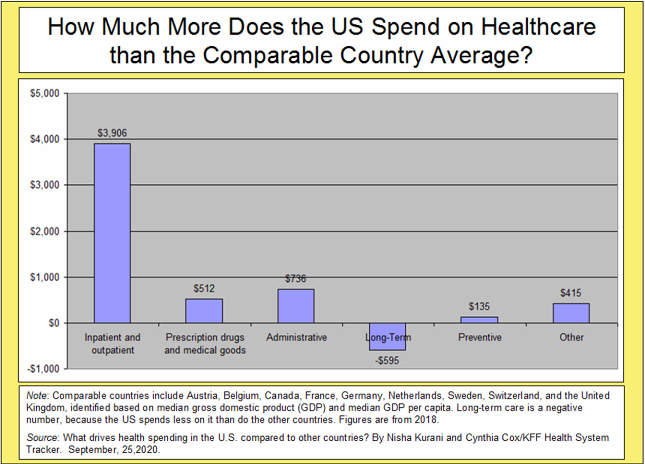The US spends way more on healthcare than other developed countries. For example, in 2018 the US spent $5,110 more per capita than the comparable country average. Here’s a breakdown of what that additional money paid for:
Per the above chart, around 76% of the extra healthcare spending in the US goes to inpatient and outpatient services, which mostly boils down to hospitals and physicians. US Hospitals are expensive because most have near-monopoly pricing power. And US physicians are expensive because they have supply-based pricing power. Check it out:
So in 2018, generalist physicians (GPs) in the US earned almost $134,000 more on average than GPs in comparable countries. And specialists earned close to $183,000 more. I’d wager the pay differential is much greater in 2022. For one thing, US physicians make a lot more now:
There are around a million licensed physicians in the US. If they earned $75K less a year than the current average, they’d still be earning more than their counterparts in other developed countries and the US health system would be saving $75 billion a year. Of course, that’s not going to happen any time soon - at least not as long as physician groups control the supply of residencies in the US and hence the supply of doctors.
So we’ve got the pricing power of hospitals and physicians versus policy wonks with a lot of good ideas. Who’s going to win that battle? On that cheerful note, I’ll close with a quote:
“Efforts to reduce healthcare spending—even if they’re aimed at reducing the future rate of increase in expenditures—are bound to provoke the powerful groups comprising the healthcare sector. Deciding whose revenue would be cut and how reductions would be allocated among different healthcare interests will require widespread agreement on the necessity, urgency, and inevitability of these reductions—coupled with exceptional political leadership.” - Why U.S. Healthcare Spending Is Rising So Fast. By Michelle P. Scott/Investopedia. Updated January 17, 2022


